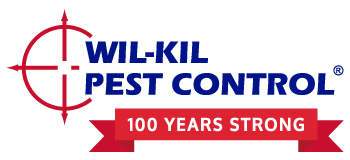Examining the leading cause of death in the past century provides an interesting snapshot of the marked progress in American medical treatment. In the early 1900s, influenza and pneumonia plagued the country, accounting for an astonishing 200 deaths per 100,000 citizens. Other ailments resulting in death included tuberculosis and gastrointestinal infections. Now, those same health risks account for a fraction of U.S. deaths, and the average life expectancy has doubled that of our early 20th century ancestors.
A large part of these achievements stem from a significant upgrade to our medical facilities and improved education of staff. Hospitals now are more equipped to contain and isolate harmful pathogens, resulting in fewer disease outbreaks nationwide. Americans view hospitals as a bastion of cleanliness and health, which is a standard your maintenance staff should look to achieve in regards to pests. Today, we look at how integrated pest management (IPM) can only improve your hospital building’s commitment to health standards.
Get A Free Quote
Holistic Approach
Pesticides are an integral factor to most removal strategies, as they are very effective when used appropriately. The key factor is “when used appropriately.” Some pest control companies use pesticides as the only means of eliminating infestations, wildly spraying them across affected areas without any direction. IPM focuses most on targeting a specific pest, using a pest’s behavioral patterns and biology to dictate a solution and minimizing the need for pesticides by exhausting all other control methods first. With the help of trained professionals, you’re able to correctly identify the pest entering your building and treat based on its characteristics. Certain situations can even be mitigated through continued monitoring and slight structural adjustments.
Additionally, IPM emphasizes a very strict reporting system for all pest activities. Not only will you have comprehensive documentation that helps your staff, but it will gradually demonstrate which pests affect your hospital the most. With diligent record keeping, you and your pest control professional will notice seasonal trends and weaknesses in your building’s construction. It may be a lengthy process, but ultimately rewarding once you begin to spot correlations.
Minimize Exposure
Utilizing insecticides or other harmful chemicals as your only method of combatting an infestation can be incredibly dangerous in any environment, not to mention a hospital. Many individuals with weaker immune systems, allergies or other sensitivities may be negatively impacted by these chemicals.
IPM best practices seek to diminish this event from even occurring, as pesticide usage is only in areas where the chemicals can be applied in a highly targeted area. Most pest infestations can be prevented through building alterations or physical barriers. A number of non-toxic options also exist, reducing chemical exposure indoors. Patients and their respective visitors deserve a comfortable environment at all times.
Cost Effective
IPM strategies for hospitals are most preferable due to the innumerable health benefits offered. However, the parties authorizing purchases for your department might not see the advantages of switching the current program and misunderstand the benefits of a new policy. A simple evaluation of the cost shows just how much your building can save by adopting IPM’s guidelines.
Because integrated pest management looks to prevent rather than react, your incidence of pests will be greatly reduced with a proper infrastructure in place. As such, the need to continually outsource pest management work to treat acute problems also lessens. This will inevitably shore up more funds to be applied elsewhere in your budgets. In a study on the University of Rochester’s IPM program, researchers found the school reduced their spending on materials and personnel by over 50%.
Moreover, IPM precipitates active involvement from all staff members. By scheduling an all-inclusive training session using a pest management professional, you are able to expand your pest control program with your current staff and decrease the risks associated with pests that fly under the radar. With time and dedication from management, this can continue to be a central part of hiring and adequate training.
Contact Wil-Kil to learn more about pest control in healthcare facilities.

